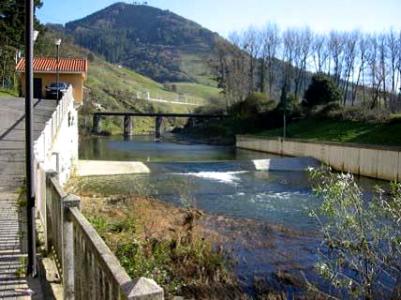Hydrology and Water Resources
River basin authorities perform functions including water planning, resource management and use, protection of the public water domain, concessions of private water usage rights, water quality control, the design and construction of new water infrastructure, dam safety programs, data banks, etc. Integrated water information systems are essential for carrying out all of these tasks. For this industry, SICE develops customized solutions for river basin management entities to obtain the information necessary for adequate management and operation.
SICE takes charge of installation, maintenance and subsequent operation.
An AHIS is a system that is able to collect, transmit in real time, process and submit all data that describe the hydrological and hydraulic condition of a river basin, for the purpose of managing and exploiting its water resources and being able to take appropriate action against possible eventualities.
SICE's experience with these systems ranges from the initial installation of the system to the subsequent maintenance and operation service, provided by qualified and experienced personnel who are able not only to manage and control the system, but also to create new computer utilities or tools to facilitate user access to the information that is generated.
From an AHIS control center, SICE is able to manage data from multiple systems (AWQIS, ROEA, etc.) to allow for it to be operated by different users.
An AWQIS meets the need for precise and reliable information on the quality of continental surface water. This type of control can be applied to critical points to monitor outflows and protected areas through the real time measurement of physical-chemical parameters, the activation of pollution alarms and an analysis of trend curves and behavioral studies.
SICE installs metering networks and offers subsequent maintenance and operation services, encouraging the use of AWQIS by the customer's personnel as part of their protection and warning activities in zones of special interest, river patrols and water quality management for activities to monitor, control, authorize and sanction waste poured into a river basin.
A hydro-meteorological network consists of three fundamental elements: remote stations, a communications system and a processing system for controlling hydro-meteorological variables (flow and precipitation data, as well as other meteorological parameters such as air temperature, relative humidity, wind direction and speed, etc.).
Remote stations are responsible for the collection of data provided by sensors and processing, sorting and storing them before finally transmitting them. They are able to report instantaneously on serious alarms. If the alarm is not major, it is sent along with the rest of the information when it is updated from the central control post. SICE also offer data acquisition systems that are produced in house for different station types.
The communications system is used to transmit the information recorded by the stations to the processing center. SICE possesses experience with all types of communications, from satellite (DVB, INMARSAT, GOES, etc.) to UHF, VHF or Tetra radio systems, as well as the simplest GSM/GPRS systems.
The processing center is the place where the system is operated and monitored and where all information from the remote stations is collected. Its main functions are communications management, displaying and storing data and managing alarms and emergencies.
SICE installs and maintains all components of hydro-meteorological networks.
Floods are the most common and frequent natural disaster worldwide, causing considerable loss of property and claiming numerous lives. Water authorities worldwide are aware of this problem and are increasingly making progress with the implementation of so-called early warning systems or eventuality decision support systems, in which SICE is expert.
As understood by SICE, early warning systems cannot be separated from the decision support systems, as there is always a connection between them and information systems (AHIS, AWQIS and hydro-meteorological networks, etc.).
In general terms, the early warning and decision support systems provided by SICE are based on modelling of the hydrological response of a basin or system at three basic levels - hydrological models, hydraulic models and dam management -, for the purpose of gaining time when identifying a risk and its possible effects, as well as to guarantee protection, minimise damage and warn the appropriate authorities and affected population.
More information about the Early Warning Decision Support System (DSS)
With the aim of equipping waste water treatment plants (WWTP) with instrumentation to continuously measure the quality of waste water, SICE installs, maintains and operates waste water quality control systems that are able to analyze various parameters in the effluent from each installation that is discharged into both streams and river basins. This ensures both the protection of the environment and compliance with requirements established in discharge authorizations issued by the relevant authorities.
As well as placing an emphasis on parameter measurement or monitoring elements, SICE's experience with water quality has shown it to be necessary to create and thoroughly optimize a series of auxiliary components. These, in conjunction with measurement components, will help to achieve an operational, reliable, robust and low maintenance system.
